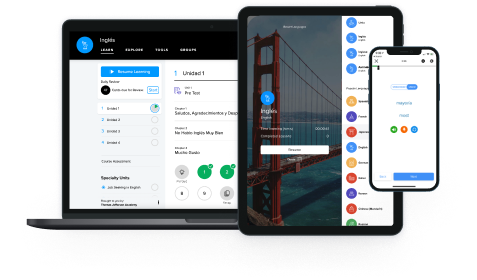EnglishVerbs, Prepositions In English, a phrasal verb is a phrase that acts like a , but is made from a verb plus a , , or both. The meaning of a phrasal verb cannot always be predicted from the meaning of its parts. For example:
→ turn on = start / activate
Can you turn down the volume, please?
→ turn down = lower / reduce
Please turn off the TV before going to bed.
→ turn off = stop / deactivate
In all three examples, the verb “turn” is coupled with different prepositions (on, up, and off) and creates new and unpredictable meanings.
Phrasal verbs are very common in both written and spoken English, and there are many of them! While the frequent use of phrasal verbs makes them important to know, the sheer number of them could be somewhat overwhelming for English learners. Don’t let that discourage you, though. The chances are you already know many of them!
In this post, we will talk about the structure of phrasal verbs, how to use them in sentences, and what makes them different from other kinds of English verbs. Along the way, we’ll introduce you to some of the most common and useful phrasal verbs in English. Are you ready? Let’s dive in!
What is the structure of phrasal verbs?
As the word “phrase” indicates, a phrasal verb consists of a group of words, which functions as a verb. There are three ways that a phrasal verb can be structured:
Why don’t you look up the word you don’t know in a dictionary?
→ look up = seek information in a database
Mary works out every morning.
→ work out = exercise
Mary put forward a solution to the problem.
→ put forward = submit or suggest
I look forward to meeting you.
→ look forward to = think about a future event with pleasure
I can’t put up with his rude remarks any longer.
→ put up with = tolerate
The adverb or preposition in a phrasal verb is sometimes called the particle. Therefore, a phrasal verb always has the structure: verb + particle(s)
There are a few verbs that used in a lot of common phrasal verbs. Some of the most common ones are listed below:
take | take off, take on, take out, take up, take away |
|---|
get | get up, get off, get on, get in, get out, get away |
|---|
make | make up, make out, make over, make up for |
|---|
pick | pick on, pick up, pick at, pick out |
|---|
put | put on, put off, put up, put away |
|---|
look | look for, look up, look out |
|---|
turn | turn on, turn off, turn up, turn down |
|---|
Check out this much longer list of phrasal verbs to learn more!
How to conjugate phrasal verbs in English?
ContConjugating phrasal verbs is easy! Just change the form of the verb like you would change the form of any other verb. The adverb and/or or preposition does not change its form.
Let’s look at the phrasal verb pick up(to go collect something or someone) as an example:
| I usually pick up my son from school at three o’clock. |
| I picked up my son from school at two o’clock yesterday. |
| I will pick up my son tomorrow at the usual time. |
| My husband is picking up my son right now as we speak. |
| My husband has picked up my son a few times this past month. |
| I need to leave now to pick up my son on time. |
| Picking up my son on time is important. |
What do phrasal verbs mean?
The meaning of a phrasal verb is often related to the meaning of the verb part of the phrase. For example:
| |
| |
| to move to a flat position |
| to contact many people by phone |
However, over time, many phrasal verbs have become idioms. Though the meaning of a phrasal verb was originally related to the meaning of the verb part, that relationship is no longer obvious. For example:
| to expect someone to help |
| to exhaust or reach the end of a resource |
| start eating enthusiastically |
And just like any kind of verb, phrasal verbs can have more than one meaning. For example:
remove clothing / leave the ground to fly / become successful
seek in a database / become better
examine / officially leave a hotel
It is best to learn the meanings of phrasal verbs as independent words. You can use the meaning of the base verb to help you remember a phrasal verb once you know it, but don’t assume that you can guess the meaning of a phrasal verb just because you know how to use the base verb!
For example, when it is cold outside, you will ✅ put on a hat, but you do not ❌ put off your hat when you come home! The opposite of put on is actually take off. The verbs put off and take on are phrasal verbs, but they have a totally unrelated meaning!
make someone dislike you / postpone
To avoid running into problems like this, always look up unfamiliar phrasal verbs in a dictionary. Or, you can check out this list of common phrasal verbs in English with examples to get started learning!
Separable vs. inseparable phrasal verbs
Phrasal verbs can be divided into two groups: separable phrasal verbs and inseparable phrasal verbs. A separable phrasal verb can be separated by an , but an inseparable phrasal verb cannot. Let’s have a closer look at the difference.
Separable phrasal verbs
In a separable phrasal verb, a can follow the verb or it can come between the verb and the particle. The meaning is not affected.
phrasal verbdirect object
I will pick up Steve at the airport tomorrow.
= I will pick Steve up at the airport tomorrow.
phrasal verbdirect object
I will put on a casual shirt for tonight's dinner.
= I will put a casual shirt on for tonight’s dinner.
Some common separable phrasal verbs include pick up, put on, take off, figure out, call out, give up, and more!
When the direct object is a pronoun (me, you, him, her, it, etc.), it must be placed inside the phrasal verb.
phrasal verbdirect object
✅ I will pick him up at the airport tomorrow.
❌ I will pick up him at the airport tomorrow.
In all other cases, both options are possible.
How to add an indirect object to a separable phrasal verb?
If you want to add an to a separable phrasal verb, it should always come after the verb and the direct object, inside a to / for phrase:
phrasal verbdirect objectindirect object
I picked up the medicine for my grandomother.
= I picked the medicine up for my grandmother.
phrasal verbdirect objectindirect object
She put together the shelf for her friend.
= She put the shelf together for her friend.
In speech, you may sometimes hear native speakers place the indirect object between the verb and the particle, like this:
phrasal verbindirect objectdirect object
🆗 I picked my grandmother up some medicine.
However, this is usually considered an error (especially in writing) and it can only be done with a few phrasal verbs. it is better to keep the indirect object in a to / for phrase.
Inseparable phrasal verbs
As the name states, the parts of an inseparable phrasal verb always stay together. There are two types of inseparable phrasal verbs:
Inseparable phrasal verbs without an object
(e.g. check in, come up, come in, cut back, drop in, drop out, give in, ...)
Inseparable phrasal verbs that take an object
(e.g. get over, ask for, build on, call on, deal with, fall through, ...)
When a phrasal verb takes an object and it is inseparable, the object must come after the whole phrasal verb, whether it is a noun, a noun phrase, or a pronoun.
✅ I am going to ask for help with the project.
❌ I am going to ask help for with the project.
✅ It took her a long time to get over it.
❌ It took her a long time to get it over.
How to tell if a phrasal verb is separable or inseparable?
Unfortunately, there is no definite way to tell whether a phrasal verb is separable or not without looking it up in a dictionary. A good dictionary will often indicate if a phrasal verb is separable or not by inserting something / someone between a verb and the particle.
Luckily, three-word phrasal verbs are ALWAYS inseparable. All components need to stay together.
✅ We need to come up with a new plan to win this match.
❌ We need to come a new plan up with to win this match.
❌ We need to come up a new plan with to win this match.
Phrasal verbs vs. prepositional verbs
Phrasal verbs and prepositional verbs both involve a verb that works with a preposition. However, there is a difference. You can think of it this way:
A phrasal verb gets its own dictionary entry. The verb and the preposition combine to form a new verb. For example:
We went through the paperwork.
→ Here go through means examine piece-by-piece. This is not go(to move) + through(in the middle of), so it is a phrasal verb!
A prepositional verb is a verb that is working with a preposition in a particular sentence, and could work with another preposition in another sentence without changing its essential meaning.
We went through the forest.
→ Here go through literally means to move in the middle of, so it is not a phrasal verb.
cannot come between the verb and particle of a phrasal verb, but they can come between the verb and the prepositional phrase in a prepositional verb!
phrasal verbadverb
✅ He looked up the word quickly.
❌ He looked quickly up the word.
verbprepositionadverb
✅ He looked at the watch anxiously.
✅ He looked anxiously at the watch.
When to use phrasal verbs in English?
In English, you can use a phrasal verb in all kinds of speech and writing. Just like any verb, some phrasal verbs are more formal and others are less formal.
For historical reasons, the formal synonym for a lot of informal English phrasal verbs will be a non-phrasal verb. For example:
Informal:The researcher found out that…
Formal:The researcher determined that…
Informal:The study brings up new questions.
Formal:The study raises new questions.
So, if you see a pair of synonyms, one phrasal one not, it’s a good guess that the non-phrasal verb will be more formal.
But there are plenty of formal phrasal verbs as well! For example:
Formal:Researchers carried out a survey.
Formal:Staff should adhere to the safety guidelines.
Summary
In this post, we’ve explored how to use phrasal verbs in English. Keep in mind that…
A phrasal verb is a phrase that consists of a verb and particles, which can be prepositions, adverbs, or a combination of both.
A phrasal verb has a unique meaning that is not easy to deduce from the combined meanings of the individual words.
Some phrasal verbs are separable, while others are not. When a pronoun is used with a separable phrasal verb, it must be placed between the verb and the particle.
All three-word phrasal verbs are not separable.
Let’s practice using English phrasal verbs! Or, start learning some vocabulary with this list of 150+ common phrasal verbs in English!
To embark on your next language adventure, join Mango on social!

